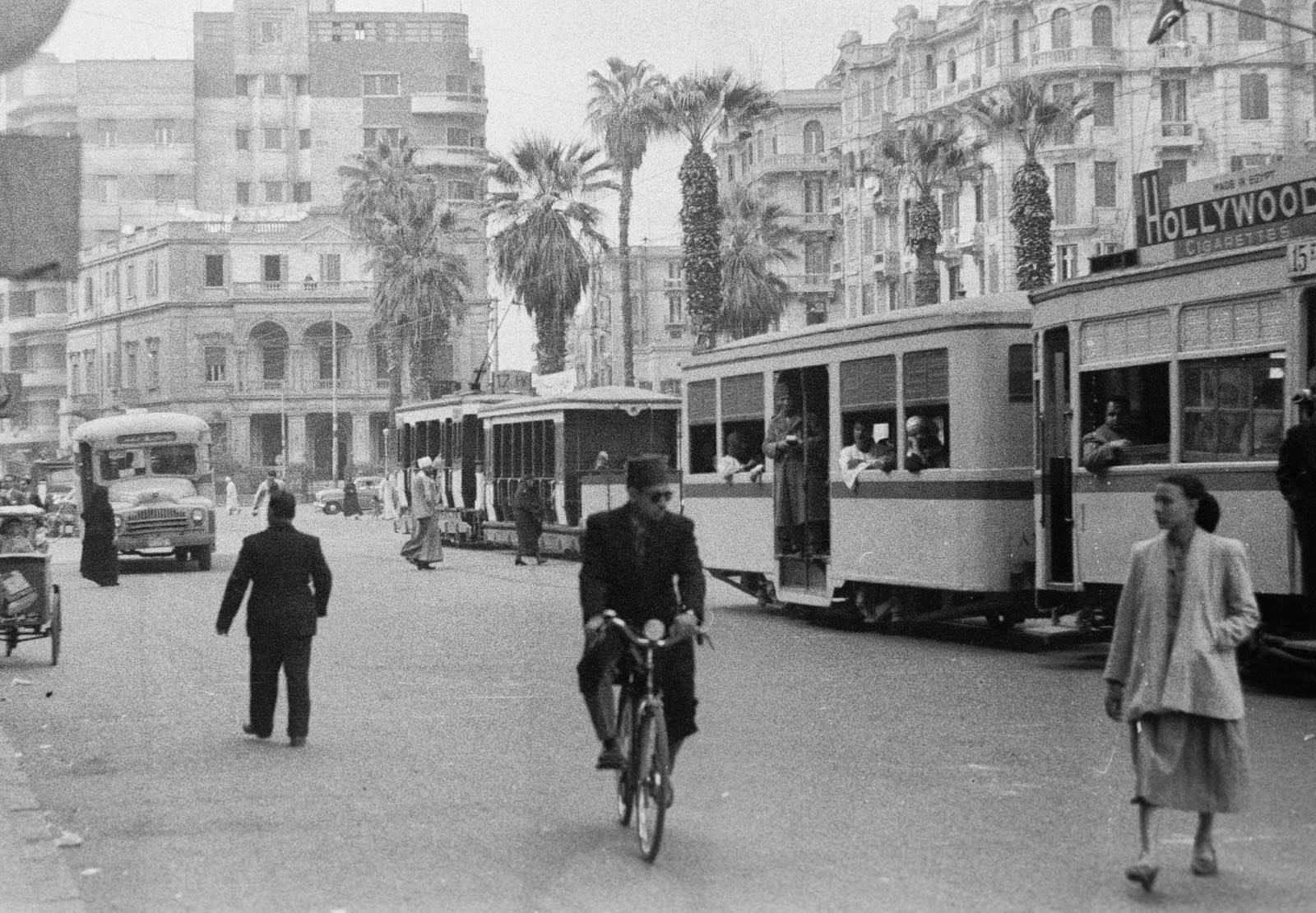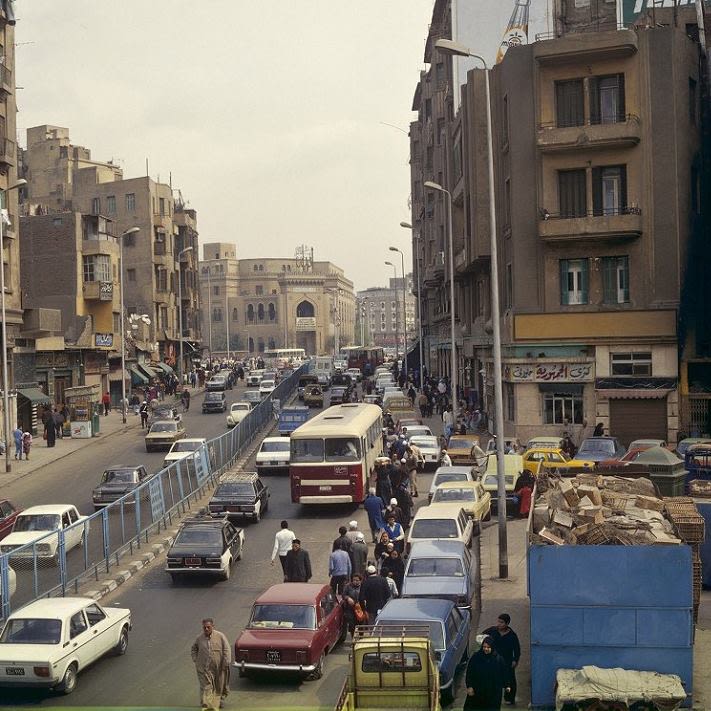Egypt leads the environmental change
Egypt environmental status throughout the years.




If the cities are considered the world's great capitals, Cairo is undoubtedly among the first ten or ten odd. It is the first (absolute) city in a vast stretch of the ancient world. If the world's historical capitals are limited, perhaps Cairo is the mother of all cities. But, when we consider cultural weight, political influence and national and intellectual influence, there is no capital in the sense that we imagine it has in its state, such as Cairo in terms of weight, despotic primacy, control, or direction, and possibly even exaggeration. This is Cairo, then: a frozen or preserved past, every stone infused with the stone of the city. past and sweat, and every inch of it has man's fingerprints." In his book "Cairo," released in 1993, Jamal Hamdan saw it this way.
Gordon Waterfield, wrote his memoirs and writings. Cairo had a population of half a million people in 1940, he claims. Cairo retained its distance from the concrete tide in the 1950s. The residential buildings did not have more than five or six stories. By the 1960s, the number of floors was constantly increasing. There were, of course, exceptions.
In the 1970s, Cairo was attempting to capture the heart of art. However, as the crucial articulated contract tightened its grasp on Cairo and applied its standards and rules, ancient Cairo began to fade in front of the other Cairo.
Cairo, which arose in 1897 for the first time in Egyptian history as a metropolis of half a million, became a city of more than 10 million in 2020, in addition to visitors, as residents of Cairo and those displaced from rural raced in the two-million rabbit race. Cairo's population has grown from about two million in 1947 to three million and 350 thousand in 1960, four million and 300 thousand in 1966, five million and 80 thousand in 1976, and nearly ten million in late 2019.
Overcrowding began to choke Cairo, and the search for money began in the capital's territory, where there are work prospects, education, and money needed for survival. The village boys' dreams began to fly in the sky until they boarded the "Egypt" train, as they call Cairo, and this was an accurate description of what happened in Cairo... the narrow area, the huge numbers, and from here the nation's economic and social problems began, particularly social and intellectual differences, the spread of ignorance and poverty led to the existence of crimes, slums, and intellectual and social backwardness. In addition to the increase in childbearing and the arrival of a large number of people inside Cairo, the pursuit of money has contributed to the appearance of illegal buildings, the establishment of factories, the lack of a waste disposal mechanism, the existence of a heavy burden on the government in order to preserve the environment, and this contradicts the Egyptian economic situation, particularly in the early 1980s, and people were contributors.
Egypt is regarded as one of the countries where reliance on fossil fuels, particularly petroleum derivatives, is the primary source of energy, with consumption accounting for approximately 96% of total energy used. And where economic policies in this field reflect a general examination of this pollution, its confiscation, its economic consequences, and the economic policies used in this field

Thousands of animals are killed each year as a result of plastic pollution. Swallowing trash or tripping over plastic debris can harm river animals and fish. Egypt's gross domestic product is reduced by 5% as a result of pollution According to World Bank estimates, environmental degradation caused by air pollution costs Egypt roughly 5% of its yearly GDP, or $2.4 billion per year.
Climate change is also a problem for Egypt, as climate data models predict that average annual temperatures in Egypt will rise by 2-3°C by 2050, causing prolonged heat waves and increasing the frequency and intensity of droughts.
The governorates of Cairo, Giza, and Qalyubia contain 37.7% of all licensed vehicles in Egypt, implying that more than a third of Egypt's vehicles are concentrated in three governorates, excluding vehicles that enter these governorates from other governorates on a daily basis, implying that Greater Cairo contains more than a third of Egypt's vehicle pollutants.
Strategy 2050 it can be achieved through a lot of phases as it can be obtained through sequential activity the government can do and first, we must highlight our goals as:
1. Achieving Sustainable and low-emission economic growth in the different sectors and this can be achieved by Energy transition by increasing the share of all renewable and alternative energy sources in the energy mix, reducing emissions associated with the use of fossil fuel, maximizing energy efficiency, Adopt sustainable consumption and production trends for reduction of greenhouse gas emissions from other non-energy activities
2. Second goal is enhancing Resilience and Adaptive Capacity to Climate Change, and Alleviating the Associated Negative Impacts, we should start with citizens protection from the negative health impacts of climate change, minimize loss and damage to country assets and eco-systems by preserving them from the impacts of climate change, preserving country's resources from the impacts of climate change
3. Third goal is Enhancing Climate Change Action Governance and Management as first define the roles and responsibilities of the different stakeholders in order to achieve the strategic goals, we must seek for Improving the rank of Egypt in the international profile of climate change actions to attract further investments and climate finance opportunities and lastly, we should enhance institutional, procedural and legal arrangements such as Monitoring. Reporting and Verification (MRV) system
4. Fourth goal is talking about enhancing Climate Financing Infrastructure as by promoting local green banking and green credit lines, promoting innovative financing mechanisms prioritizing adaptation actions, compliance with Multilateral Development Banks (MDB) guidelines for climate finance and to Build on success of the current climate finance programs
5. Last goal is defined as enhancing Scientific Research, Technology Transfer, Knowledge Management and Awareness to Combat Climate Change as first we should Strengthening the role of scientific research and technology transfer in climate change mitigation and adaptation, Facilitating the dissemination of climate-relevant information and knowledge management among government institutions and citizens and last but not least Raising awareness on climate change among different stakeholders (high-level policy/decision makers, citizens, students) as raising the awareness helps in being ready to deal with any potential threat in a correct manner. Additionally, it creates a generation that is sufficiently aware of the scope of the problem, increasing the efficacy of the mechanisms needed to mitigate the effects of climate change. As a result, it raises their likelihood of taking an active role in the green economy and increasing their understanding of the significance of projects designed to lessen the effects of climate change as well as adaptation, especially in light of the expectation that risks will increase in the future.
Learn about the different types of pollution around us:
In a more precise sense, we face different forms of pollution around us that are not limited to air and water pollution only. We will present them to you:
1- Air pollution
Air pollution refers to the release of pollutants such as toxic gases into the atmosphere. Pollutants can result from many sources, including both natural processes and human activity. In addition to volcanic eruptions, lake eruptions, cars, industrial waste, etc. are some examples of sources of air pollution.
2- Water pollution
Water pollution is the pollution of water bodies such as lakes, rivers, ponds, groundwater, etc., resulting from pollutants. Like air pollution, water pollution is one of the most harmful types of pollution, as a large amount of all types of pollutants produced on earth end up in water bodies. The most important water pollutants are the toxic wastes released by industries, pathogens released in wastewater, harmful chemicals present in agricultural drainage and so on.
Climate change is also a problem for Egypt, as climate data models predict that average annual temperatures in Egypt will rise by 2-3°C by 2050, causing prolonged heat waves and increasing the frequency and intensity of droughts.
Car exhaust remains the largest air pollutant in Egypt, and the Central Agency for Public Mobilization and Statistics revealed in its latest census that the total number of licensed vehicles in the governorates of the Republic amounted to 10.8 million vehicles, on December 31, 2020.
Cairo governorate ranked first with 2.4 million vehicles, or 22%, followed by Giza governorate, with 1.2 million vehicles, or 10.9%, while the percentage of vehicles in Qalyubia represented 4.8%, with 515,000 vehicles out of the total number of vehicles in Egypt.
The governorates of Cairo, Giza and Qalyubia include 37.7% of the total licensed vehicles in Egypt, i.e. more than a third of Egypt's vehicles are concentrated in 3 governorates other than the vehicles that enter these governorates from other governorates daily, which means that more than a third of vehicle pollutants in Egypt are concentrated in Greater Cairo.
Egypt's Climate Change Strategy 2050
Confronting the effects of climate change is in line with the goals of improving the quality of life for citizens, achieving sustainable economic growth, preserving natural resources, and strengthening Egypt's leadership in the global climate file, according to information seen by the specialized energy platform. The strategy is in line with the country's sustainable development strategy "Egypt's Vision 2030", and aims to reduce harmful emissions and prepare the country to withstand the effects of global warming. The government has identified the five main goals of the strategy, which were previously issued by the Ministry of Environment.
The five goals are:-
•Achieving sustainable economic growth and reducing emissions in various sectors
•Building resilience and ability to adapt to climate change and mitigate negative impacts associated with climate change.
•Improving the governance and management of activities in the field of climate change.
•Improving the infrastructure for financing climate activities.
Although Egypt emits no more than 0.6% of the world's total emissions, it is one of the countries most vulnerable to the negative effects of climate change on many sectors, such as coasts, agriculture, water resources, health, population, and infrastructure strategy will also focus on increasing new and renewable energy projects, maximizing energy efficiency and adopting sustainable production and consumption methods, adding that the government will also consider allocating funding for climate change projects led by women.
A national strategy for the transition to a green economy
1-The government decided that 50% of the plan's criteria for the state should be compatible with environmental standards, to integrate the environmental dimension into the projects of other ministries so that 50% of the projects of various ministries will be green projects during the coming period.
2- The most important and largest projects in the electricity, energy, transportation, water, and sanitation sectors are being implemented in order to achieve Vision 2030.
3- Work is underway to achieve 30% of green projects, and the percentage will rise to 50% in the next three years.
4- It is intended to increase public investments directed to green projects, from 15% in the current year plan (20/2021), to 30% in the fiscal year plan (2021/2022).
5- The number of green projects included in the fiscal year plans 20/2021 amounts to about 691 projects, at a total cost of about EGP 447.3 billion.
6-Directing 14% of the total public investment to these projects
7- The value of Egypt’s portfolio of eligible green projects amounted to $1.9 billion as of September 2020, of which 16% is in the field of renewable energy, 19% in the field of clean transportation, 26% in the field of water and sanitation, and 39% in the field of pollution reduction
8- Egypt issued the first green bonds in the region, at a value of $750 million, in September 2020, one of 3 issuances of green bonds in the Middle East and North Africa region during the past year.
9- The green economy includes 6 sectors, green buildings, renewable energy, including solar energy, wind energy, sustainable transportation, water management, land management, and waste management.
10- The green economy is used in emerging industries, and depends on renewable energy, wind energy, solar energy, etc., in addition to helping to save energy in green buildings, to reach the highest efficiency.
shorthand layout+photos: Gamal aldin safwat 20060190
Aya magdy abdelmawgood 20060139
Mai waled khas 20060798
video editing: Yassin mahmoud 20061009
Nourhan ayman 20060908
shooting: Ghaydaa sayed ali asaker 20061066
Aya magdy 20060139
Mai walid 20060798
Nada waleed sayed 20060864
writing&research: youssef dawood 20061027
Ganna ahmed mohamed 20060196
Nada waleed sayed 20060864
Sama ashraf hamdy 20060430
Ghaydaa sayed ali 20061066
